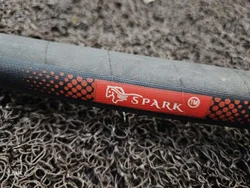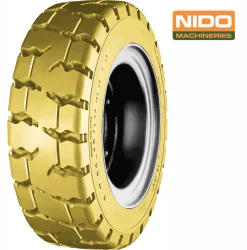Rubber
- Molecular Weight: 0
- Update Date: 2024-03-08 17:08:55
What is Rubber?
Definition
Any of a number of natural or synthetic high polymers having unique properties of defor- mation (elongation or yield under stress) and elas- tic recovery after vulcanization with sulfur or other cross-linking agent, which in effect changes the polymer fro
Definition
A natural or synthetic polymeric elastic material. Natural rubber is a polymer of methylbuta-1,3-diene (isoprene). Various synthetic rubbers are made by polymerization; for example chloroprene rubber (from 2-chlorobuta-1,3-diene) and silicone rubbers. See also vulcanization.
Definition
rubber: polymeric substance obtainedfrom the sap of the tree Heveabrasiliensis. Crude natural rubber isobtained by coagulating and dryingthe sap (latex), and is then modifiedby vulcanization and compoundingwith fillers. It is a polymerof isoprene containing the unit–CH2C(CH3):CHCH2-. Various syntheticrubbers can also be made.
Agricultural Uses
Rubber is a naturally occurring elastic substance. It is
found in the latex of many plant species belonging to about 311 genera. Rubber quickly restores itself to its
original size after it has been stretched or compressed.
The yield or stretch of the vulcanized material ranges
from a few hundred to over l000 percent.
Natural rubber is obtained from many plants and
commercially from Huvea brusiliensis, a tree native to
Brazil. The tree is now grown in the tropical regions of
Asia, Africa and America. Havea is propagated through
seeds and by adopting vegetative methods. Planting is
done in specially prepared nursery beds. The soil is dug
up and mixed with fertilizers. The germinated seeds are
planted with a spacing of 30 cm x 30 cm. The seedlings
are grown in the nursery till they attain a diameter of 20 to
25 mm above the collar.
The seedlings are usually transplanted in June-July
into pits made in the field about 4.5 m apart to
accommodate a stand of about 500 plants per hectare.
Sometimes the seeds are sown in situ in the fields.
Rubber trees should be regularly manured with
balanced fertilizer mixtures from the time of planting to
the age of economic production for ensuring maximum
production. The recommended dose varies according to
the age of the plant. During the first year of planting, a
single dose of 225 g of a 10: 10:4: 1.5 NPKMg mixture is
applied to each plant. The dosage increases to 900 g and
100 g in two split doses during the second and third years
respectively. From the fourth year till the plants in the
area become ready for tapping, the application of 900 g
of the mixture per plant in two split doses, one in April-
May and the other in September-October is
recommended. For trees under tapping, an NPK
10: 10: 10 mixture at the rate of 900 g per tree is applied
annually during April-May
Latex is obtained from the bark of the rubber tree by
tapping. Tapping is a process of controlled wounding,
during which thin shavings of the bark are removed to
induce the flow of latex. Normally a rubber tree can be
tapped economically for 25 to 30 years. A slanted cut is
made in the bark and the milky fluid latex, occurring in
the inner bark, is tapped off. The latex, an aqueous
colloid of rubber and other particles, is coagulated with
dilute acid and creped or sheeted and smoked. Natural
rubber is a polymer of isoprene. Its elasticity is due to the
chains being randomly coiled but tending to straighten
when the rubber is stretched.
Properties of Rubber
| Dielectric constant | 3(0.0℃) |
Safety information for Rubber
Computed Descriptors for Rubber
New Products
Indole Methyl Resin tert-butyl 9-methoxy-3-azaspiro[5.5]undecane-3-carboxylate Boc-His(Boc)-OH 2-CTC Resin 4-Chloro-7-tosy1-7Hpyrrolo[2,3-d]pyrimidine 5,7-Dibromo-1H-indole 2,5-dichloro-N-hydroxy-4,6-dimethylpyridine-3-carboximidamide 2,2-Dimethoxy-7-azaspiro[3.5]nonane hydrochloride 4-chloromethyl-5-methyl-1,3-dioxol-2-one (DMDO-Cl) R-2-BENZYLOXY PROPIONIC ACID 1,1’-CARBONYLDIIMIDAZOLE 1,1’-CARBONYLDI (1,2-4 TRIAZOLE) N-METHYL INDAZOLE-3-CARBOXYLIC ACID 4-((2-hydroxyethyl)thio)benzoic acid 1-(TERT-BUTOXYCARBONYL)-2-PYRROLIDINONE Methyl 6-methylnicotinate 3-Pyridineacrylic acid tert-Butyl carbazate TETRAHYDRO-2H-PYRAN-3-OL 2-((4-morpholinophenylamino) (methylthio) methylene) malononitrile 3-(4-morpholinophenylamino)-5-amino-1H-pyrazole-4-carbonitrile 2,4-dihydroxybenzaldehyde 1,3-Diethyl-1,3-Diphenylurea Methyl 2-methylquinoline-6-carboxylateYou may like
-
 Jhalak 01 Ladies Printed Rubber Slippers, Size: 4X8View Details
Jhalak 01 Ladies Printed Rubber Slippers, Size: 4X8View Details -
 Rubber SAE 100 4SP 5/8View Details
Rubber SAE 100 4SP 5/8View Details -
 48mm To 162mm Rubber and MS Conveyor Drive Pulley, Capacity: 1 tonView Details
48mm To 162mm Rubber and MS Conveyor Drive Pulley, Capacity: 1 tonView Details -
 Rubber Continental Non Marking Solid TireView Details
Rubber Continental Non Marking Solid TireView Details -
 Pyridine 99.5% HPLC /UV SpectroscopyView Details
Pyridine 99.5% HPLC /UV SpectroscopyView Details
110-86-1 -
 Dibutyl PhthalateView Details
Dibutyl PhthalateView Details
84-74-2 -
 Imidazole Spot supply, competitive priceView Details
Imidazole Spot supply, competitive priceView Details
288-32-4 -
 Thiourea 99% ARView Details
Thiourea 99% ARView Details
62-56-6
